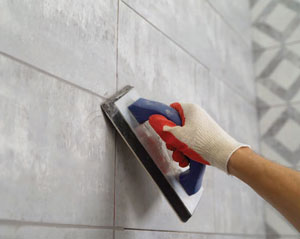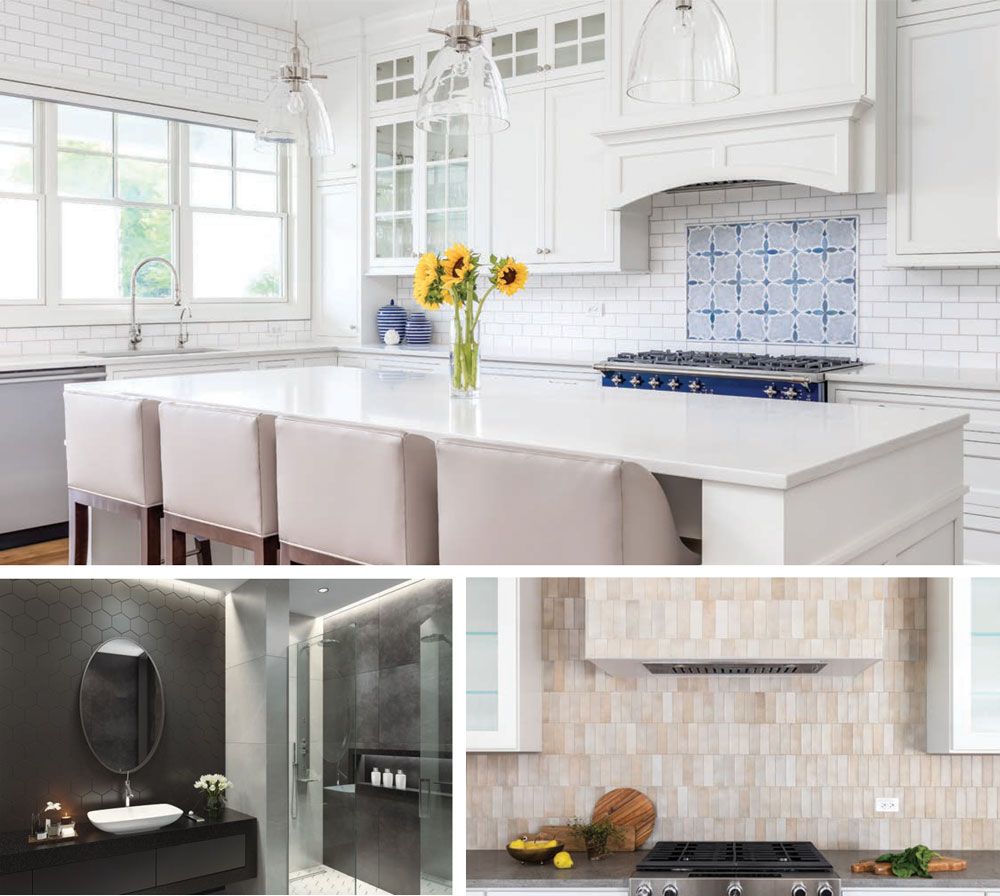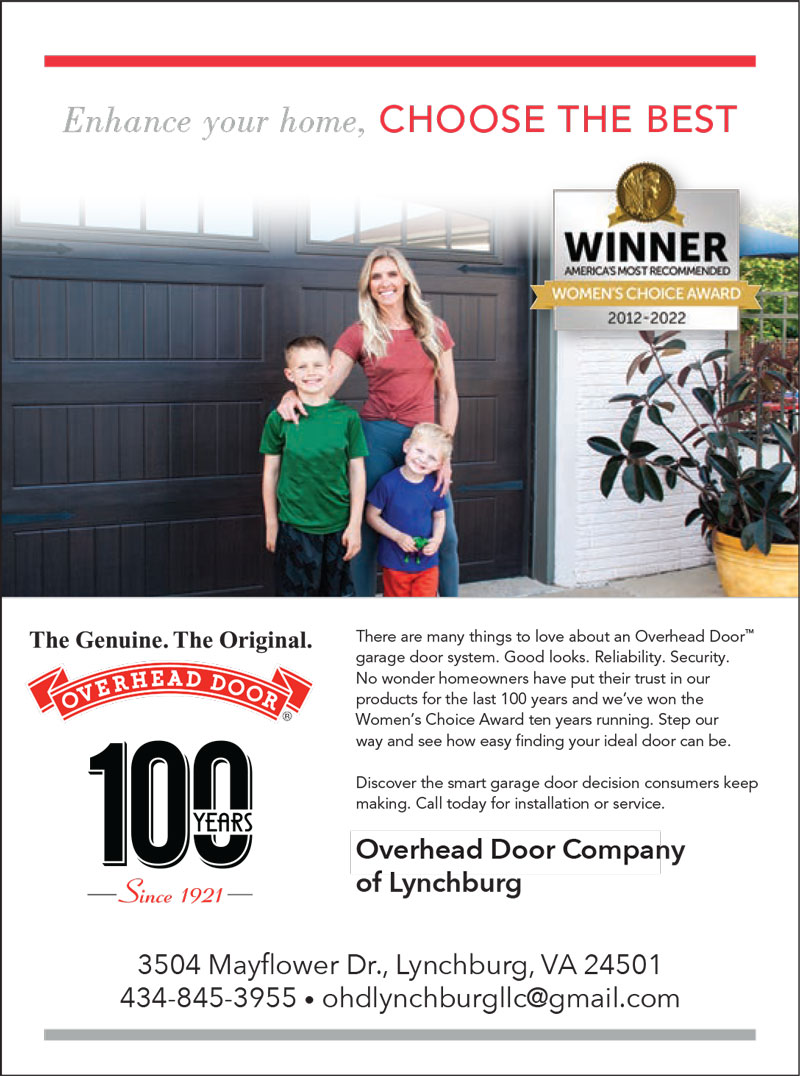GEOMETRIC GLAM
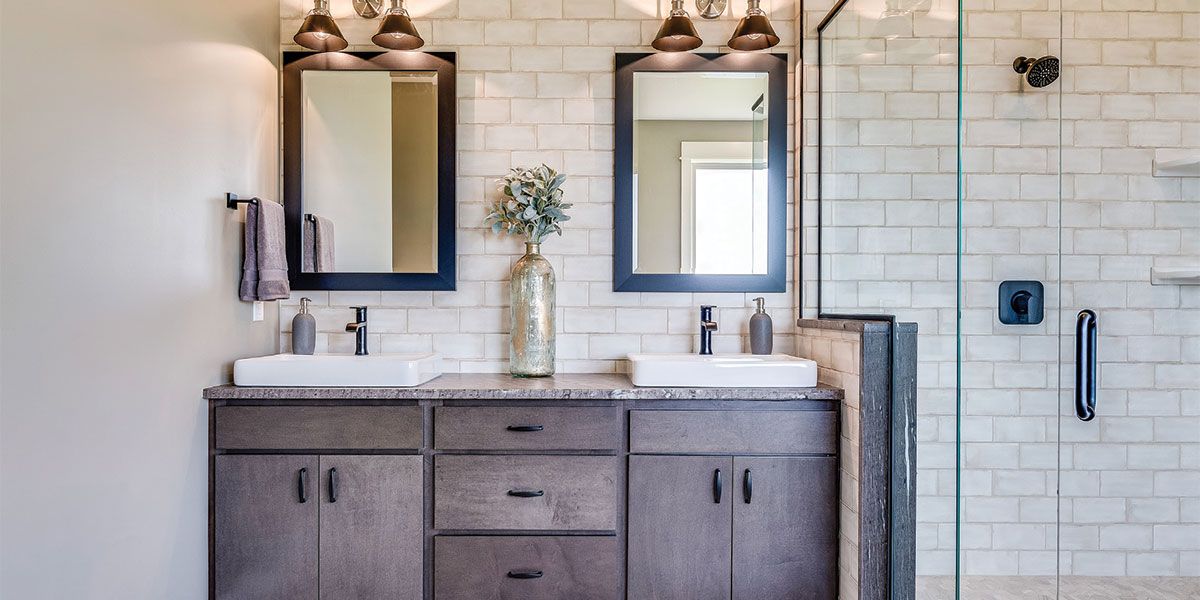
Elevating Your Home Improvement with Tile
Whether you’re simply updating or doing a complete renovation, adding tile to kitchens, bathrooms and living spaces will undoubtably provide a fresh, dramatic look to your home. With literally thousands of choices in size, shape, color, texture, material and pattern, how do you make selections that will achieve the impact you’re seeking?
“Most people have some sort of house pages or a Pinterest board with pictures of what they like,” says Bryana Woodard, design consultant at Piedmont Floor Show. “This gives me insight into their taste and style. We start there and then look at samples in the showroom.”
Alicia Smith, vice president and in-house designer for F&S Building Innovations, notes, “We’re not telling people what they need, we’re giving them inspiration to arrive at something they’ll really love in their home.”
Many suppliers have computer-generated programs that show what the materials would actually look like in the home. With customization more accessible than ever, taking a look at the current trends may help in the decision-making process.
Shape & size
Beyond the square and rectangle, tile trends are leaning toward geometric shapes like hexagons, trapezoids and circles, as well as abstract shapes and unique designs. Subway tiles will always be part of the design space, but to give them an updated look, designers are seeing changes in color, size and grout color.
In terms of size, “we’re seeing larger format tiles trending,” says Woodard. “The standard size is 12″ x 24.” The larger tiles are 24″ x 48,” which gives you fewer grout lines, and for those who like to minimize the grout lines, these are great. Also, the patterns can be matched a lot better with the larger tiles.”
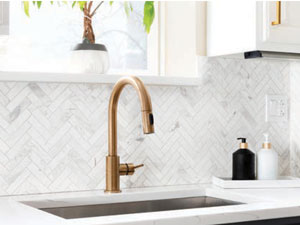 On the opposite end of the spectrum, small tiles are making a big impact. Picture a subway tile in 3″ x ¼” size. These smaller tiles can be used along with the larger ones to define certain areas, create a border or to make stripes.
On the opposite end of the spectrum, small tiles are making a big impact. Picture a subway tile in 3″ x ¼” size. These smaller tiles can be used along with the larger ones to define certain areas, create a border or to make stripes.
Color & texture
“We’re seeing a mix of warmer and cooler colors for longevity,” comments Woodard. “Lots of blues and greens. In kitchens, we’re seeing more color and pattern when there’s not much movement on the countertops. A more jazzy backsplash to complement the countertop.”
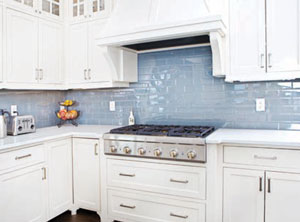 Smith agrees, “Backsplashes with brighter colors have been a hotspot lately. We’re also seeing a resurgence of earth tones with wooden kitchen cabinets.” The neutrals, in the kitchen or bath, allow homeowners to change colors with accessories, mats and towels and to decorate for different seasons.
Smith agrees, “Backsplashes with brighter colors have been a hotspot lately. We’re also seeing a resurgence of earth tones with wooden kitchen cabinets.” The neutrals, in the kitchen or bath, allow homeowners to change colors with accessories, mats and towels and to decorate for different seasons.
In the shower, a pop of color in the niche (where the soap and shampoos are housed) is a fun look. Also, grout makes a huge difference. The current trend is blending the color of the tile with the grout, so that the grout doesn’t stand out. To update subway tiles, on the other hand, a bold grout makes a statement. Consider pairing white or beige tiles with a black grout or a colored grout.
Texture is another important choice when selecting the tiles. The options are many: bright and glossy, subdued and matte, rough or smooth. For floors, however, rough, textured tiles are desirable because they retain heat better and also provide traction for walking.
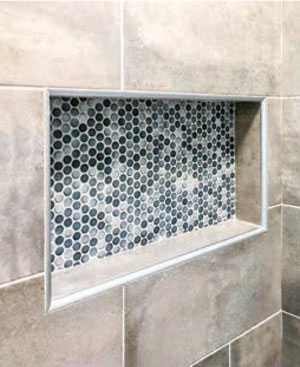 “Texture is always fun,” says Smith. “I love a raised, 3D-style tile, for walls, a very modern look. Gorgeous, but can be hard to clean.”
“Texture is always fun,” says Smith. “I love a raised, 3D-style tile, for walls, a very modern look. Gorgeous, but can be hard to clean.”
Handcrafted tiles also provide a unique, artisan look that adds character and a boldness that creates a polished finish. “The slightly wavy edges are interesting,” comments Woodard. “They’re definitely worth a look.”
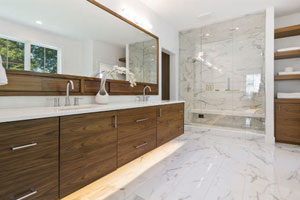 Patterns & Material
Patterns & Material
Smith notes that a monolithic style is making a splash in the design world. “The same color and tile from floor to shower, to walls and even to the ceiling,” she explains. For inspiration from the colors of the year, click here.
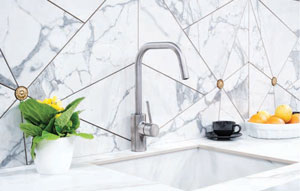 Smith adds, “We’ve been seeing this in high-end luxury builds, but we’re now seeing lots of people thinking ‘My bathroom could be a spa.’ Turning the bathroom into a wet room gives you that spa-like experience.” A wet room is a bathing area that contains a shower and a tub with the entire area covered in tile.
Smith adds, “We’ve been seeing this in high-end luxury builds, but we’re now seeing lots of people thinking ‘My bathroom could be a spa.’ Turning the bathroom into a wet room gives you that spa-like experience.” A wet room is a bathing area that contains a shower and a tub with the entire area covered in tile.
Varying the size of the tile and selecting matte in some areas and glossy in other areas can add variety and interest to the dramatic wall-to-floor look.
Ceramic tile is common because it’s easy to install and durable. Tiles are also made of porcelain, glass, concrete, marble, granite, limestone, terracotta and metal.
To keep your space from being visually overwhelming, it’s best to choose no more than three different styles of tile. Any more than that may look too busy, especially in a smaller area. Use unique patterns, but not on every surface. Combining color, shape and style adds interest, but try not to go overboard. To make a room look larger, use a subtle pattern. “And don’t be afraid of texture,” encourages Woodard. “Texture can really make a big difference in the overall look of a project.”
Looking at trends in tile is important so that your home doesn’t look dated, but what’s most important is that you’re satisfied with the outcome. So, enjoy looking at tile trends and then select what you really love! ✦
TILE SHAPES & PATTERNS
Tiles can come in all sorts of shapes, sizes and patterns, but here are some of the most popular choices.
SQUARE
The basic square is one of the most common tile shapes. It’s widely varied and ranges from tiny half-inch boxes to tiles that measure 12 inches or more. Common patterns include checkerboard and mosaic.
CHECKERBOARD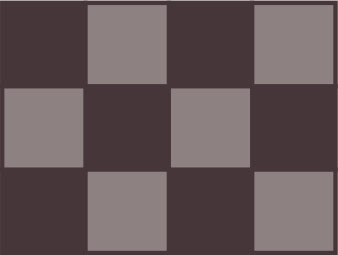
MOSAIC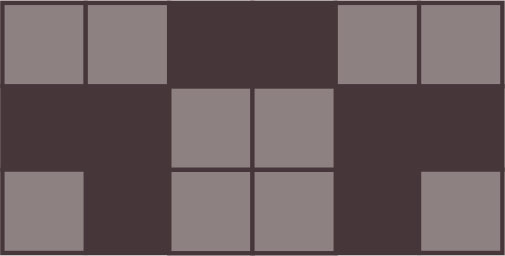
………………………………………………
RECTANGLE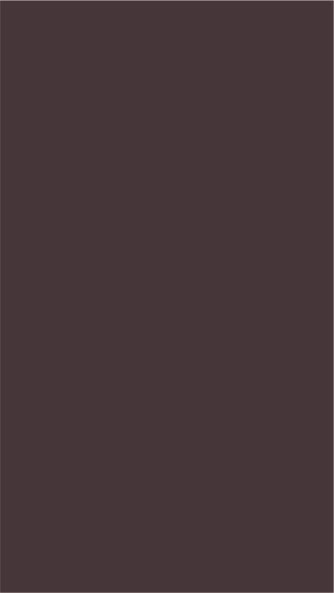
Another common tile shape is the rectangle. It offers more arrangement styles than a square. Turning them on their different sides can widely change the look of a room. Common patterns include running bond, herringbone, basketweave and strips.
RUNNING BOND![]()
HERRINGBONE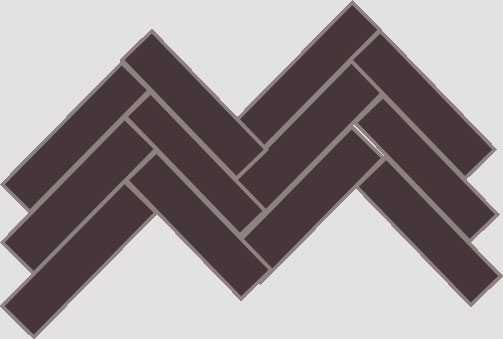
BASKETWEAVE 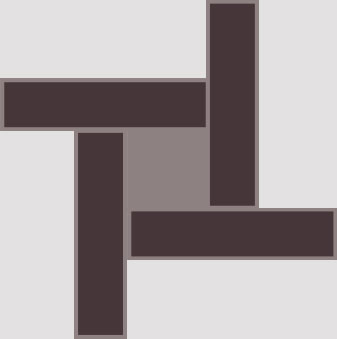
(need both square and rectangle tiles)
STRIPS![]()
………………………………………………
HEXAGON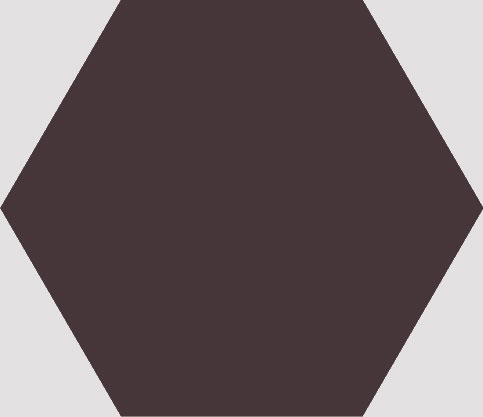
This six-sided shape is a popular tile choice because they interlock with one another just right. Picket tiles, or elongated hexagons, are common as well.
REGULAR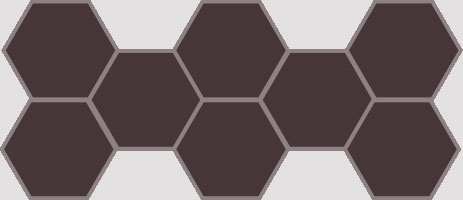
PICKET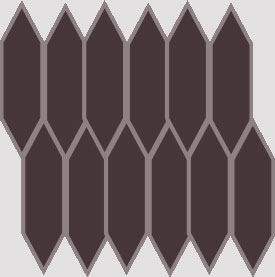
………………………………………………
OCTAGON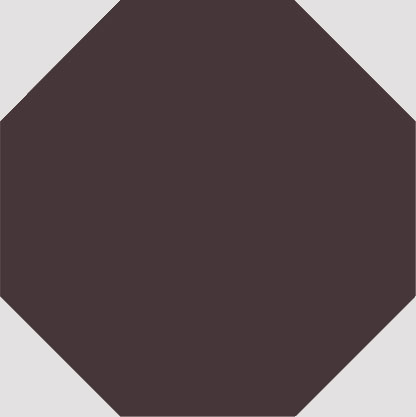
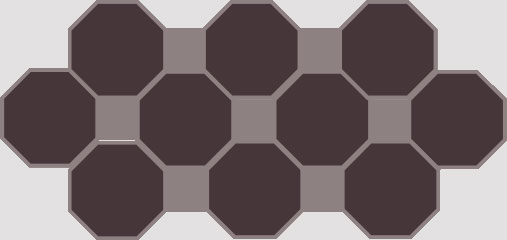
The eight-sided octagon is a less common tile shape because they don’t fit together quite as nicely. In order to fill the space, they are usually paired with square tiles.
………………………………………………
CIRCLE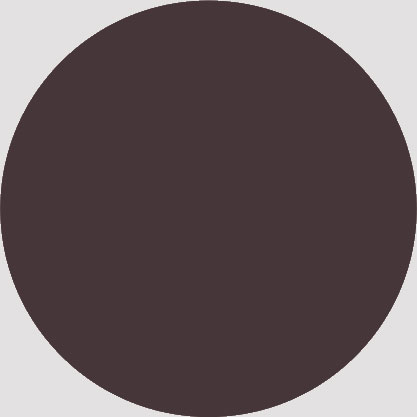
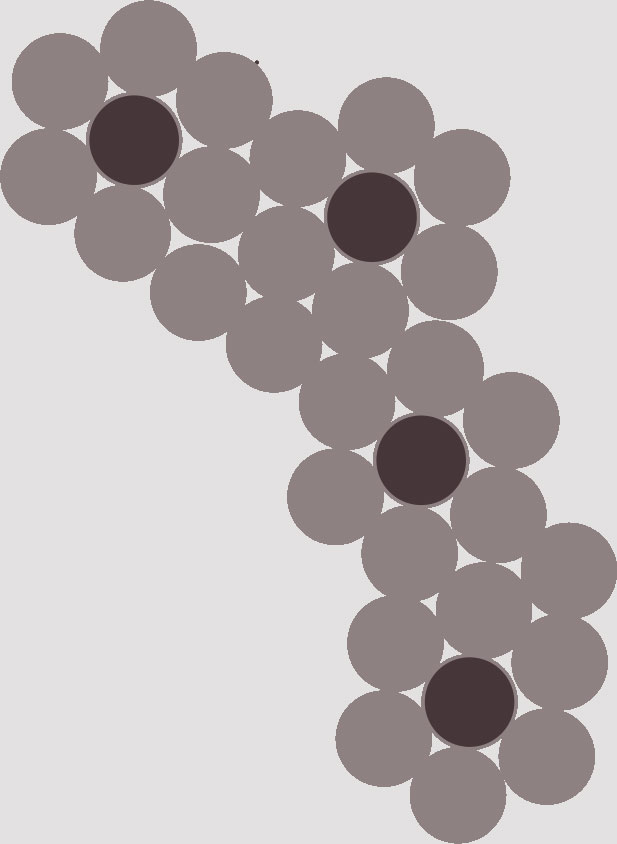
You don’t need straight edges in a tile design. Circles can also be used. Small circles are called penny tiles and are often used as an accent in bathrooms. Larger circles can be used as well.
Source: artsaics.com
back, BATHROOMS, ceramic, circles, concrete, geometric shapes, glass, Granite, grout, hexagons, KITCHENS, limestone, living spaces, marble, metal, porcelain, rectangle, spa, splash, Square, Subway tiles, terracotta, tile, trapezoids
